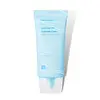What's inside
What's inside
 Key Ingredients
Key Ingredients

 Benefits
Benefits

 Concerns
Concerns

 Ingredients Side-by-side
Ingredients Side-by-side

Water
Skin ConditioningButylene Glycol
HumectantGlycerin
HumectantCaprylic/Capric Triglyceride
MaskingButyrospermum Parkii Butter
Skin ConditioningPolyglyceryl-10 Distearate
EmulsifyingStearyl Alcohol
EmollientCetyl Alcohol
EmollientGlyceryl Stearate
EmollientStearic Acid
Cleansing1,2-Hexanediol
Skin ConditioningPhenyl Trimethicone
Skin ConditioningCeramide NP
Skin ConditioningCaprylyl Glycol
EmollientAcrylates/C10-30 Alkyl Acrylate Crosspolymer
Emulsion StabilisingArginine
MaskingPhytosterols
Skin ConditioningDisodium EDTA
Sodium Hyaluronate
HumectantPolyphosphorylcholine Glycol Acrylate
Beta-Glucan
Skin ConditioningAsiatic Acid
Skin ConditioningAsiaticoside
AntioxidantMadecassic Acid
Skin ConditioningCitrus Aurantium Bergamia Fruit Oil
MaskingLimonene
PerfumingLinalool
PerfumingWater, Butylene Glycol, Glycerin, Caprylic/Capric Triglyceride, Butyrospermum Parkii Butter, Polyglyceryl-10 Distearate, Stearyl Alcohol, Cetyl Alcohol, Glyceryl Stearate, Stearic Acid, 1,2-Hexanediol, Phenyl Trimethicone, Ceramide NP, Caprylyl Glycol, Acrylates/C10-30 Alkyl Acrylate Crosspolymer, Arginine, Phytosterols, Disodium EDTA, Sodium Hyaluronate, Polyphosphorylcholine Glycol Acrylate, Beta-Glucan, Asiatic Acid, Asiaticoside, Madecassic Acid, Citrus Aurantium Bergamia Fruit Oil, Limonene, Linalool
Caprylic/Capric Triglyceride
MaskingPropanediol
SolventGlycerin
HumectantButyrospermum Parkii Butter
Skin ConditioningPentylene Glycol
Skin ConditioningLimnanthes Alba Seed Oil
Skin ConditioningGlyceryl Stearate Se
EmulsifyingStearyl Alcohol
EmollientSteareth-20
CleansingTocopherol
AntioxidantSalvia Hispanica Herb Oil
PerfumingDisodium S-Phytyl Diglycoloylcysteine
Skin ProtectingSpilanthes Acmella Flower Extract
Skin ConditioningCeramide NP
Skin ConditioningIsocetyl Alcohol
EmollientCetyl Alcohol
EmollientPhytosterols
Skin ConditioningFerulic Acid
AntimicrobialOenothera Biennis Seed Extract
Skin ConditioningButylene Glycol
HumectantCarbomer
Emulsion StabilisingPentasodium Pentetate
Potassium Hydroxide
BufferingCaprylic/Capric Triglyceride, Propanediol, Glycerin, Butyrospermum Parkii Butter, Pentylene Glycol, Limnanthes Alba Seed Oil, Glyceryl Stearate Se, Stearyl Alcohol, Steareth-20, Tocopherol, Salvia Hispanica Herb Oil, Disodium S-Phytyl Diglycoloylcysteine, Spilanthes Acmella Flower Extract, Ceramide NP, Isocetyl Alcohol, Cetyl Alcohol, Phytosterols, Ferulic Acid, Oenothera Biennis Seed Extract, Butylene Glycol, Carbomer, Pentasodium Pentetate, Potassium Hydroxide
Ingredients Explained
These ingredients are found in both products.
Ingredients higher up in an ingredient list are typically present in a larger amount.
Butylene Glycol (or BG) is used within cosmetic products for a few different reasons:
Overall, Butylene Glycol is a safe and well-rounded ingredient that works well with other ingredients.
Though this ingredient works well with most skin types, some people with sensitive skin may experience a reaction such as allergic rashes, closed comedones, or itchiness.
Learn more about Butylene GlycolThis ingredient is also known as shea butter. It is an effective skin hydrator and emollient.
Emollients help soothe and soften your skin. It does this by creating a protective film on your skin. This barrier helps trap moisture and keeps your skin hydrated. Emollients may be effective at treating dry or itchy skin.
Shea butter is rich in antioxidants. Antioxidants help fight free-radicals, or molecules that may harm the body. It is also full of fatty acids including stearic acid and linoleic acid. These acids help replenish the skin and keep skin moisturized.
While Shea Butter has an SPF rating of about 3-4, it is not a sunscreen replacement.
Shea butter may not be fungal acne safe. We recommend speaking with a professional if you have any concerns.
Learn more about Butyrospermum Parkii ButterThis ingredient is an emollient, solvent, and texture enhancer. It is considered a skin-softener by helping the skin prevent moisture loss.
It helps thicken a product's formula and makes it easier to spread by dissolving clumping compounds.
Caprylic Triglyceride is made by combining glycerin with coconut oil, forming a clear liquid.
While there is an assumption Caprylic Triglyceride can clog pores due to it being derived from coconut oil, there is no research supporting this.
Learn more about Caprylic/Capric TriglycerideCeramide NP is a type of ceramide and formally known as ceramide 3.
Ceramides are intercellular lipids naturally found in our skin that bonds dead skin cells together to create a barrier. They are known for their ability to hold water and thus are a great ingredient for dry skin.
Ceramides are an important building block for our skin barrier. A stronger barrier helps the skin look more firm and hydrated. By bolstering the skin ceramides act as a barrier against irritating ingredients. This can help with inflammation as well.
If you would like to eat ceramides, sweet potatoes contain a small amount.
Read more about other common types of ceramides here:
Ceramide AP
Ceramide EOP
Cetyl Alcohol is a fatty alcohol. Fatty Alcohols are most often used as an emollient or to thicken a product.
Its main roles are:
Though it has "alcohol" in the name, it is not related to denatured alcohol or ethyl alcohol.
The FDA allows products labeled "alcohol-free" to have fatty alcohols.
Learn more about Cetyl AlcoholGlycerin is already naturally found in your skin. It helps moisturize and protect your skin.
A study from 2016 found glycerin to be more effective as a humectant than AHAs and hyaluronic acid.
As a humectant, it helps the skin stay hydrated by pulling moisture to your skin. The low molecular weight of glycerin allows it to pull moisture into the deeper layers of your skin.
Hydrated skin improves your skin barrier; Your skin barrier helps protect against irritants and bacteria.
Glycerin has also been found to have antimicrobial and antiviral properties. Due to these properties, glycerin is often used in wound and burn treatments.
In cosmetics, glycerin is usually derived from plants such as soybean or palm. However, it can also be sourced from animals, such as tallow or animal fat.
This ingredient is organic, colorless, odorless, and non-toxic.
Glycerin is the name for this ingredient in American English. British English uses Glycerol/Glycerine.
Learn more about GlycerinPhytosterols come from plants, nuts, and whole grains. These compounds have skin soothing and moisturizing properties.
Fun fact: They are similar to cholesterol and can help lower cholesterol levels.
Stearyl Alcohol is a type of fatty alcohol from stearic acid. It is a white, waxy compound used to emulsify ingredients.
Fatty Alcohols are most often used as an emollient or to thicken a product. Emollients help soothe and hydrate the skin by trapping moisture.
They are usually derived from natural fats and oils and therefore do not have the same drying or irritating effect as solvent alcohols. FDA allows products labeled "alcohol-free" to have fatty alcohols.
Learn more about Stearyl Alcohol